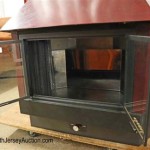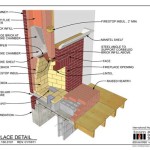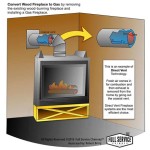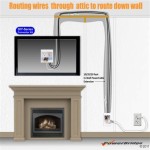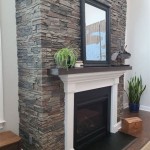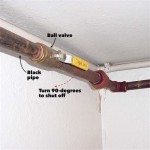How to Clean a Gas Fireplace: A Comprehensive Guide
Gas fireplaces offer the warmth and ambiance of a traditional fireplace without the hassle of wood and ash. However, even though they are cleaner than wood-burning fireplaces, they still require regular cleaning and maintenance to ensure optimal performance, safety, and longevity. Dust, soot, and debris can accumulate over time, potentially affecting the flame quality, efficiency, and even the safety of the unit. This article provides a detailed guide on how to thoroughly clean a gas fireplace, covering the necessary tools, step-by-step procedures, and safety precautions.
Preparing for the Cleaning Process
Before commencing any cleaning activity, preparation is crucial. This involves gathering the necessary tools and materials, understanding the fireplace components, and prioritizing safety measures.
Gathering Supplies: The following items are typically required for cleaning a gas fireplace:
- Screwdrivers: A set of screwdrivers (both Phillips head and flathead) of various sizes will be needed to disassemble and assemble the fireplace components.
- Vacuum Cleaner: A vacuum cleaner with a hose attachment and various brush attachments is essential for removing dust, soot, and loose debris. A shop vacuum is preferable due to its higher suction power and ability to handle fine particles.
- Soft Brushes: A variety of soft-bristled brushes, including paintbrushes, toothbrushes, and detailing brushes, will be used for gently cleaning delicate components without causing damage.
- Microfiber Cloths: These are useful for wiping down surfaces and removing stubborn stains or residues.
- Mild Detergent: A mild dish soap or a specialized fireplace cleaner can be used to clean glass doors and other surfaces. Avoid harsh chemicals or abrasive cleaners.
- Glass Cleaner: A specialized glass cleaner designed for fireplace glass is recommended for removing soot and discoloration without damaging the glass.
- Protective Gear: Safety glasses, gloves, and a dust mask are essential for protecting the eyes, skin, and respiratory system from dust, soot, and potential irritants.
- Flashlight or Headlamp: A flashlight or headlamp will provide adequate illumination for inspecting and cleaning the interior of the fireplace.
- Owner's Manual: Having the fireplace's owner's manual on hand is extremely useful for identifying specific components, understanding the manufacturer's recommendations for cleaning and maintenance, and referencing safety guidelines.
Understanding Fireplace Components: Familiarizing oneself with the different parts of the fireplace is important for a thorough cleaning. Key components include:
- Glass Doors: These protect the fireplace opening and prevent drafts. They often accumulate soot and require regular cleaning.
- Firebox: This is the interior chamber of the fireplace where the flames are contained. It may be lined with ceramic fiber logs, rocks, or other decorative elements.
- Burner: This is the component that releases the gas and creates the flames. It requires careful cleaning to ensure proper gas flow and flame quality.
- Pilot Light Assembly: This is a small flame that ignites the main burner. It needs to be kept clean to ensure reliable ignition.
- Control Valve: This regulates the gas flow to the burner and pilot light. Avoid disassembling or cleaning this component without professional assistance.
- Ventilation System: This system removes exhaust gases from the fireplace. It typically does not require cleaning as part of a regular maintenance routine.
Safety Precautions: Prioritize safety during the cleaning process by taking the following precautions:
- Turn Off the Gas Supply: Completely shut off the gas supply to the fireplace before starting any cleaning or maintenance work. This is typically done by turning off the gas valve located near the fireplace or at the main gas line.
- Allow Fireplace to Cool: Ensure that the fireplace is completely cool before touching any of its components. Wait several hours after the last use to allow the unit to cool down completely.
- Wear Protective Gear: Always wear safety glasses, gloves, and a dust mask to protect yourself from dust, soot, and potential irritants.
- Ventilate the Area: Open windows or doors to provide adequate ventilation during the cleaning process.
- Consult a Professional: If unsure about any aspect of the cleaning process or if the fireplace requires more extensive repairs or maintenance, consult a qualified gas fireplace technician.
Step-by-Step Cleaning Procedure
The cleaning process should be methodical, starting with the exterior components and progressing to the interior parts. Each step should be performed carefully and thoroughly to ensure optimal results.
Cleaning the Glass Doors:
- Remove the Glass Doors: Refer to the owner's manual for instructions on how to safely remove the glass doors. Typically, this involves loosening screws or releasing latches.
- Prepare the Cleaning Solution: Mix a small amount of mild dish soap with warm water or use a specialized fireplace glass cleaner.
- Apply the Cleaning Solution: Apply the cleaning solution to the glass doors using a soft cloth or sponge. Avoid using abrasive cleaners or scouring pads, which can scratch the glass.
- Scrub the Glass: Gently scrub the glass to remove soot, grime, and other deposits. For stubborn stains, allow the cleaning solution to sit on the glass for a few minutes before scrubbing.
- Rinse the Glass: Thoroughly rinse the glass with clean water to remove all traces of the cleaning solution.
- Dry the Glass: Dry the glass with a clean microfiber cloth to prevent water spots and streaks.
- Reinstall the Glass Doors: Carefully reinstall the glass doors according to the owner's manual instructions. Ensure that they are securely fastened and properly aligned.
Cleaning the Firebox Interior:
- Remove Decorative Elements: Carefully remove any ceramic fiber logs, rocks, or other decorative elements from the firebox. Handle these items with care, as they can be fragile.
- Vacuum the Firebox: Use a vacuum cleaner with a hose attachment to remove dust, soot, and loose debris from the firebox. Pay attention to corners, crevices, and other areas where debris tends to accumulate.
- Clean the Firebox Walls: Wipe down the firebox walls with a damp microfiber cloth to remove any remaining dust or soot. For stubborn stains, use a mild detergent solution.
- Clean the Burner: Gently brush the burner with a soft-bristled brush to remove any dust or debris. Avoid using water or cleaning solutions on the burner, as this can damage the gas orifices.
- Clean the Pilot Light Assembly: Carefully clean the pilot light assembly with a soft-bristled brush to remove any dust or debris. Ensure that the pilot light orifice is clear of obstructions.
- Reinstall Decorative Elements: Carefully reinstall the ceramic fiber logs, rocks, or other decorative elements in their original positions. Refer to the owner's manual for guidance on proper placement.
Addressing Specific Issues:
- Soot Buildup: Excessive soot buildup can indicate a problem with the gas mixture or ventilation system. Consult a qualified gas fireplace technician to diagnose and resolve the issue.
- Pilot Light Problems: If the pilot light is difficult to light or keeps going out, it may be due to a dirty pilot light assembly or a faulty thermocouple. Clean the pilot light assembly or replace the thermocouple if necessary.
- Flame Color Issues: A yellow or orange flame may indicate incomplete combustion, which can be caused by a dirty burner or insufficient air supply. Clean the burner and ensure that the ventilation system is not obstructed.
Maintaining a Clean Gas Fireplace
Regular maintenance is essential for keeping a gas fireplace clean and functioning properly. This includes performing regular inspections, cleaning the fireplace periodically, and scheduling professional servicing when needed.
Regular Inspections:
- Visual Inspection: Regularly inspect the fireplace for any signs of damage, wear, or malfunction. Look for cracks in the firebox, loose connections, or unusual noises.
- Flame Quality: Observe the flame quality to ensure that it is burning cleanly and efficiently. A blue flame indicates proper combustion, while a yellow or orange flame may indicate a problem.
- Gas Leaks: Check for gas leaks by smelling for a gas odor or using a gas leak detector. If a gas leak is suspected, immediately shut off the gas supply and contact a qualified gas fireplace technician.
Periodic Cleaning:
- Frequency: Clean the gas fireplace at least once a year, or more frequently if it is used heavily.
- Component Cleaning: Focus on cleaning the glass doors, firebox interior, burner, and pilot light assembly during each cleaning session.
- Dust Removal: Regularly dust the exterior of the fireplace to prevent dust from accumulating and affecting its appearance.
Professional Servicing:
- Annual Service: Schedule an annual service with a qualified gas fireplace technician. This includes a thorough inspection, cleaning, and testing of all fireplace components.
- Problem Diagnosis: If any problems are detected during regular inspections or cleaning, consult a professional for diagnosis and repair.
- Complex Repairs: Avoid attempting complex repairs or modifications to the gas fireplace without professional assistance.
By following these guidelines, homeowners can keep their gas fireplaces clean, safe, and functioning efficiently for years to come. Proper cleaning and maintenance not only extend the lifespan of the appliance but also ensure a safe and enjoyable heating experience.

How To Clean A Gas Fireplace 11 Steps With S Wikihow

How To Clean A Gas Fireplace Regular Maintenance Keep Your Looking Great

How To Clean A Gas Fireplace 11 Steps With S Wikihow

Ventless Gas Fireplace Maintenance Guide Fireplaces Direct Learning Center

How To Clean A Gas Fireplace

The Ultimate Guide To Cleaning Your Gas Fireplace R T Services

How To Clean A Gas Fireplace Diy Family Handyman

How To Clean Fireplace Glass Wood And Gas Fireplaces Anita S Housekeeping

How To Clean A Gas Fireplace

Cleaning Gas Fireplace Logs Experts
Related Posts

